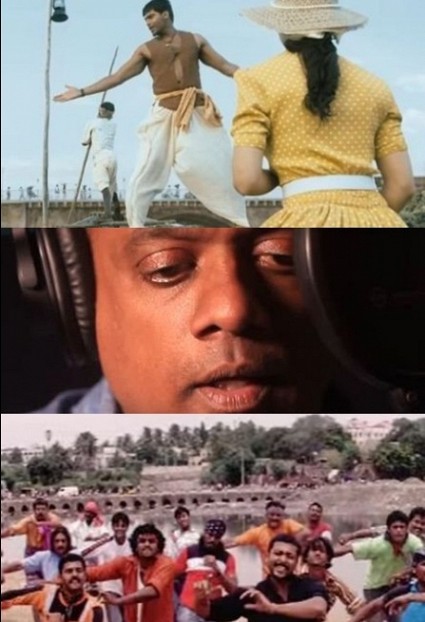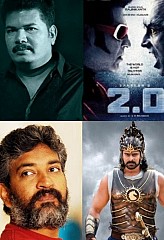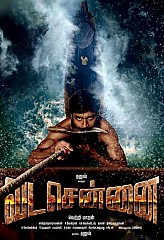

In the 2010 movie, Madrasapattinam, the hero takes the heroine for a city tour through the Madras of the mid '40s in colonial India. The sequence unfolds as a song with the following lines, “Kattavandiyilum povom, tramil eriyum povom, Cooum padagilum povom, polamaaa,” and with a scenic view of the Cooum River in the background with pure water and boats floating. Let’s cut to a song sequence from the 2005 movie, Aaru, in which the hero and his friends dance to the tunes of a peppy number with the lines, “Hey, Cooum nadhi orathula, kundhikinnu koovikinom, hey, sayankaala nerathula, hey, sundakanji oothikinom,” with the river in the background as sewage dump.
Even though the timelines of two movies are just 55 years apart, they suggest the tragic story of a river’s death within such a short span of time. In the recently released video by Behindwoods Air, filmmaker Gautham Vasudev Menon speaks out on the death of this river that was once the lifeline for a thriving city and its populous. The 12 minute video titled *Tha Kovam Varuma Varatha has incorporated observations and opinions from experts, activists and inhabitants from the river bank.
The video has triggered another round of heated discussions regarding the restoration of the Cooum River from its tragic state. A hashtag, #RevitalizeCoovum has also surfaced on the social media platforms. Chennai's Cooum river has turned into the city's drainage for some time now and has been portrayed as the backdrop of the city’s underbelly in movies. The dark and shadowy figures are coming in and out of this underbelly and a stereotype has evolved around the river.
This is really a tragic plight for a river which had been the major source of water not only for the city of Chennai but all along the nearly 72 kilometres that it flows from the origin, Tiruvallur district. The river has a distinct history of migrations, settlements and displacements, and it has witnessed man’s enormous struggle to build a thriving city on its banks. As Gautham points out, present city dwellers are unaware of the rich history the river keeps within its dying heart. For many of them, Cooum stands for odour concerns and a dumping ground for sewage and industrial effluents.
Tones of urban sewage flow into Cooum everyday which chokes the river by lowering the oxygen levels - depleting it of almost all its fish life. The relentless contamination of the river also poses threats like contagious diseases, groundwater pollution and a severe drinking water crisis. Cooum, along with Kosasthalayar River, Adyar River and Buckingham Canal, was also the flood carriers of the city. The aftermath of clogging these breathing tubes was evident when Chennai sank neck deep in the 2015 rains.
Unfortunately, Cooum is not the only victim of the ill-effects of urbanization. Mithi and Ulhas rivers in Mumbai, Musi River in Hyderabad and Yamuna in Delhi also share the same silent death of Cooum. Solid waste and disposal of wastewater kill these rivers inch by inch. With the effects of global warming and climate change hitting harder on countries like India and coastal cities like Chennai, the writing on the wall is clear; the city needs a river to stay alive and the river needs caring hands and result-oriented action plans. Otherwise, common people who depend upon the river for survival will only have computer-generated images in song sequences to watch.
Behindwoods is not responsible for the views of columnists.

OTHER LATEST BEHINDWOODS COLUMNS
RAGESH DIPU'S OTHER COLUMNS
- Shankar, Rajamouli and the age of filmmakers bigger than their movies
- Why the long wait for Vada Chennai is worth every moment
- The Mercurial Karthik Subbaraj and Our Reasons to Watch Mercury
- The bold and beautiful women of Andrea Jeremiah
- Theni Fire Accident; the Fact and Fiction of Wanderlust
- Stalkers in and out of cinema; what’s the reality?



